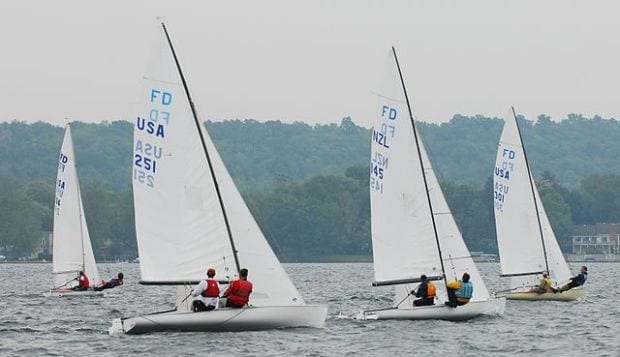Sailing expeditions gone wrong
Ah, sailing. The joy that can be had utilizing just the wind to move effortlessly across the water. At least, that’s what it looks like to the untrained observer. Even casual sailing requires a bit of effort, and if there’s a race involved, the work can be quite strenuous. Combine this with the boat changing direction frequently, often while the rigging is also moving about, and you end up with injuries.
But how do you figure out the common injuries to better prepare for them, or better yet, prevent them altogether? The authors of this paper chose the time-honored method of the internet survey. Ignoring what I said last week about the internet, it certainly allows for greater numbers than you would expect to get in a single site clinical survey. This likely results in reporting bias, as does the fact that in this survey, the average time spent sailing was 65 days per year. Certainly not a beginner group, which would reduce the number of injuries. Also, no fatal injuries were reported by third parties using the surveys, so at the extreme end of injury (death and serious disability) there would be an absence of data as well.
With that out-of-the-way, what were the injuries self-reported by this grizzled group of sailors? Mostly extremity injuries, including contusions and lacerations. Upper and lower extremities were both nearly equal at around 40% of the injuries. Head injuries represent around 10% of the total, and are almost always from the boom or spinnaker pole coming across during a jibe or tack. All of these injuries are broken down into finer detail in the paper, in case you want to know the exact percentages of knee contusions versus leg contusions.
An interesting finding was that fractures are more common in larger keel boats than in smaller dinghies. This is straightforward, as not only are all the things that can break you larger on a keel boat, there often aren’t as many open hatches to fall into on a dinghy. Nearly half of the injuries were minor enough to not need treatment, and only 4% required “evacuation” or “hospitalization”, which sounds like an interesting composite end point. However, there were still a fair amount of injuries that did need treatment, some quite serious.
From these data, certain events that lead to injury can be identified. Jibes in high wind (whether planned or not), falls through hatches or companionways, rig failures, and collisions all have high injury rates. Heavy weather, fatigue, poor communication, and inexperience all contribute to injuries as well. Most injuries occur in the cockpit, but most time is spent there as well.
A smaller part of the paper is devoted to maritime illnesses. Unsurprisingly, more than half were sunburns. Seasickness was next in frequency at nearly a third, and then you get into the single digit rates for hypothermia and dehydration. Prevention is key for these, because if you’re down a crew member, the rest have to work harder to make up the difference, increasing their risk of injury.
An important thing to note from this survey is the self-reported poor use of lifejackets. Only 30% reported using them. Allow me to be clear, the lifejacket isn’t there because you can swim, it’s there for the times you can’t. 2/3 of deaths on the water are caused by drowning, and the majority of those occur while not wearing lifejackets. Other concerning safety behaviors include alcohol use prior to injury (clearly underreported), as well as poor compliance with sunscreen recommendations.
A final point is that their injury rate of 4.6 per 1000 days of sailing is markedly different from earlier studies that had rates of 0.29 and 2.2 injuries per 1000 hours. Thus, while nobody can clearly pin down the injury rate, the ballpark number shows it isn’t the most dangerous recreational activity out there.
References
- Nathanson AT, Baird J, Mello M. Sailing injury and illness: results of an online survey. Wilderness Environ Med. 2010 Dec;21(4):291-7. [PMID 21168780]

EBM Gone Wild
Wilderness Medicine
Emergency physician with interests in wilderness and prehospital medicine. Medical Director of the Texas State Aquarium, Padre Island National Seashore, Robstown EMS, and Code 3 ER | EBM gone Wild | @EBMGoneWild |

